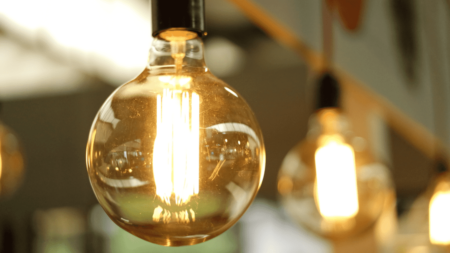Bankruptcy is not an attractive option for anyone and it’s not unfounded to wonder what might happen if you choose to declare bankruptcy in Canada.
Although it hurts to go bankrupt, sometimes, declaring bankruptcy could be the light at the end of the tunnel on your journey towards debt relief and financial stability. In this piece, you’re going to understand how bankruptcy works in Canada, including the procedure for filing for bankruptcy.
What is Bankruptcy?
Bankruptcy is a process created by law to assist unfortunate but honest debtors who can no longer pay their debts, helping them find debt relief. At the end of the process, the debts are legally discharged, with the debtor no longer bound to repay the debt.
There are many reasons why you may file for bankruptcy, but in most cases, an event occurs that makes you realize it’s nigh impossible to repay your debt.
For instance, continuous harassment from debt collectors, a garnishment order, or the inability to access credit may be the turning point influencing your decision. Other times, a traumatic life event like illness, job loss, separation, or divorce can trigger bankruptcy in Canada.
Consequently, a debtor may decide to surrender their rights to non-exempt assets to their creditors in exchange for a discharge on their unsecured debts. And this is the reason why bankruptcy means to start afresh or to get a new lease on life. Your financial slate is wiped clean, and you get to start again.
Who is Eligible to File for Bankruptcy in Canada?
To qualify to file for bankruptcy in Canada, you must be considered an insolvent person, which means:
- You owe a minimum of C$1000 in unsecured debt.
- Your debts are more significant in value than your assets.
- You can’t pay off your debts on time.
- You have property, reside or do business in Canada.
Types of Bankruptcy in Canada
If any of the above hampers you, now is the right time to know which category of bankruptcy you fall under because bankruptcy has three types in Canada:
- Personal
- Small business
- Corporate
It’s worth mentioning that apart from bankruptcy, there’s also a process known as Consumer Proposal to settle your debts. The significant difference between both is that bankruptcy clears all debt while a Consumer Proposal allows you to pay a set portion of your debt over a more extended period.
The three bankruptcy types are set down under the Bankruptcy & Insolvency Act. Studying the Act allows you to understand the intricacies and nuances of each bankruptcy category and can come in handy in the long term.
Although personal and small business bankruptcy are distinguished above, they are basically the same thing. This fact is particularly true if the small business is an unincorporated partnership or sole proprietorship. Nonetheless, each bankruptcy type will be set out and explained below.
Personal Bankruptcy
Personal bankruptcy is more common than any other type of bankruptcy in Canada. It can be tricky to know whether to file for personal bankruptcy because all cases are unique.
However, several indicators can help you determine the next step to take. Look at the points below, and if you can identify with any of them, you probably should be filing for personal bankruptcy.
- You’ve experienced income loss
- You can’t reduce your debt load despite making consistent payments
- You’re at the limit of your borrowing potential and can’t access any more credit
- You solely depend on credit for daily expenses like gas, food, and household bills
You need to take several steps when filing for personal bankruptcy. Your licensed insolvency trustee (LIT) will determine what personal bankruptcy to file for – whether a summary administration bankruptcy or ordinary administration bankruptcy.
Summary administration Bankruptcy
Once non-exempt assets are sold, your assets won’t exceed C$15,000.
- More prevalent for individuals
- The trustee fees are set by bankruptcy law and based on the amount realized by the Trustee rather than time spent.
- Assets may include home equity and property, while other investments might be exempt from seizure.
- No obligation to advertise your bankruptcy
Ordinary Administration Bankruptcy
Once non-exempt assets are sold, the remainder might exceed C$15000.
- More prevalent for businesses
- Trustee fees are derived from asset sales, and Trustee time is a critical factor.
- More time consuming
- Obligation to advertise in a newspaper
- Credit meeting must be called
- It may be better to file a consumer proposal
Once the bankruptcy proceeding is concluded, you’re likely to get one of the discharges mentioned below:
- Absolute: Your best outcome and the most common. You’re automatically discharged from all legal obligations to pay your debts. Understand certain debts can’t be removed through a bankruptcy application. Obligations like child support, alimony, and fines must be paid.
- Conditional: You must fulfill specific requirements before receiving an absolute discharge.
- Suspended: you won’t immediately and automatically receive an absolute discharge instead of receiving it at a later date.
- Discharge Refused: An uncommon situation, but it does happen. If you fall under this category, you may require further effort with your insolvency trustee to get a better outcome or apply at a future time.
Small Business Bankruptcy
Small business bankruptcy is essentially the same thing as a personal bankruptcy. That’s because the assets and debts of the business are taken as the owner’s assets and debts. Remember, this is only true if your company is not incorporated.
If the reverse is the case, you will face a more complicated process to get a discharge. Moreover, you’ll need a LIT with extensive experience, and this might cost more. In many instances, incorporated businesses have inbuilt liability protection to secure the owner’s personal assets from risk.
Corporate Bankruptcy
Corporate bankruptcy is best filed using a LIT that specializes in corporate filings. Corporations are autonomous legal entities that can sue and be sued in their name.
Therefore, owners are shielded from personal liability. The owners’ assets won’t be forfeit except the business’s. If the owner used personal assets to secure a loan, that asset would be subject to a forfeiture order.
But filing for bankruptcy isn’t the only solution to deal with your debts. Another alternative is a Consumer Proposal, which is explained just ahead.
Consumer Proposal
A Consumer Proposal requires a meeting with creditors to negotiate how a portion of the debt can be paid over a determined period.
The most significant advantage with Consumer Proposal is that your personal non-exempt assets are not automatically subject to seizure. And it also favours the creditors because they get to recover some of the outstanding debt instead of losing everything in its entirety when you file for bankruptcy.
What’s next after Declaring Bankruptcy?
Bankruptcy proceedings can start with the help of a licensed insolvency trustee. You need to consult a LIT to access your situation. If bankruptcy seems to be the best course of action, the Trustee will draw up the paperwork for filing.
Once signed, your Trustee transmits your bankruptcy information to a division of the federal government known as the Office of the Superintendent of Bankruptcy located in Ottawa. This office is responsible for informing the credit bureaus of your bankruptcy.
After five days, your LIT will transmit a copy of your bankruptcy paperwork to your creditors, allowing them to file a claim with the Trustee. It is after this step that you get a stay of proceedings preventing unsecured creditors from contacting you.
All lawsuits regarding your debt cease, and this includes your wage garnishes. Secured creditors may still receive your assets put up as security if you discontinue your payments.
Subsequently, your licensed Insolvency Trustee will file outstanding tax returns up till the bankruptcy date. Monies you owe the CRA will be added into the bankruptcy, ensuring you don’t owe this money after the conclusion of the proceedings.
Tax refunds and other credits like GST that accrue to you during the proceeding will go to your Trustee for your creditors’ benefit.
However, there are certain responsibilities you must fulfill, including:
- Attend creditors meeting where requested
- Provide proof of income to Trustee monthly
- Make Payments each month to your Trustee where you have surplus income
- Attend at least two credit counselling classes to understand money management and budgeting skills
If this is your first bankruptcy and you don’t have surplus income, you may qualify for discharge within nine months. Your bankruptcy may be longer otherwise. The most notable date is your date of discharge, where your debts are officially cancelled.
What next after filing for Bankruptcy in Canada?
Once you receive a Notice of Discharge from your Trustee, your bankruptcy is complete. It is at this point that you turn over a new page and start to rebuild your credit.
That said, a notation on your bankruptcy will remain on your credit report after your discharge, and this notation stays for six years before it’s removed. Nonetheless, it’s still possible to get credit from special lenders despite the reminder on your credit bureau report.
Other Debt Relief Options
Bankruptcy in Canada is an option of last resort. There are many other options for people struggling with debt in Canada. Before going all out for bankruptcy, consult a professional to discuss your financial situation.
Note down your assets, debts, and income to make your financial picture clearer. Your debt problem doesn’t mean you need to file bankruptcy. Some alternatives to consider include:
Filing a debt management plan: if your debts aren’t considerable enough to file for bankruptcy, a credit professional can assist you with a plan to pay what you owe. This management plan is as impactful as a consumer proposal but designed for smaller debt.
Taking a debt consolidation loan: a debt consolidation loan helps you refinance your debt and lower your interest. While it isn’t the magic wand to wave your financial problems away, it can help you simplify your finances and boost credit.
FAQs
What happens to my credit score after bankruptcy?
Your credit score will drop after filing for bankruptcy, but this is only temporary. You may still be extended credit in the form of a credit card, even during bankruptcy. The new credit gives you the chance to build your credit again and show future creditors you’re more financially responsible.
What happens to my spouse’s credit after filing for bankruptcy in Canada?
If you own your debts, your bankruptcy doesn’t affect your spouse and won’t appear in their credit report. However, joint debt means your creditors will harass your spouse for the funds. If this is the case, consider filing for joint bankruptcy.
What happens to my debt after filing for bankruptcy in Canada?
The aim of bankruptcy is to clear all unsecured debt like credit cards, lines of credit, outstanding bills, payday loans, and even tax debt. You could include student debt if you left school for at least seven years.
However, debts like alimony, child support, court fines, and fraud debt can’t be let off through bankruptcy.
What happens to my income after filing for bankruptcy?
Even though your income isn’t seized, bankruptcy in Canada means that the more you make, the more money you’ll pay to your creditors.
This principle is known as a surplus income payment and affects your bankruptcy costs. If your income is above the government baseline, you may consider filing a Consumer Proposal to avoid surplus payments.
Will I ever get credit again?
Yes, you will. You may apply for credit immediately after filing, but you must state you’re an active bankrupt if you apply for C$1000 and above. You can also get a secured credit card and car loan immediately after filing.
However, the determining factors will be your income and past payment history. You may attract a high-interest rate for starters, but there are steps you can take to rebuild your credit.












